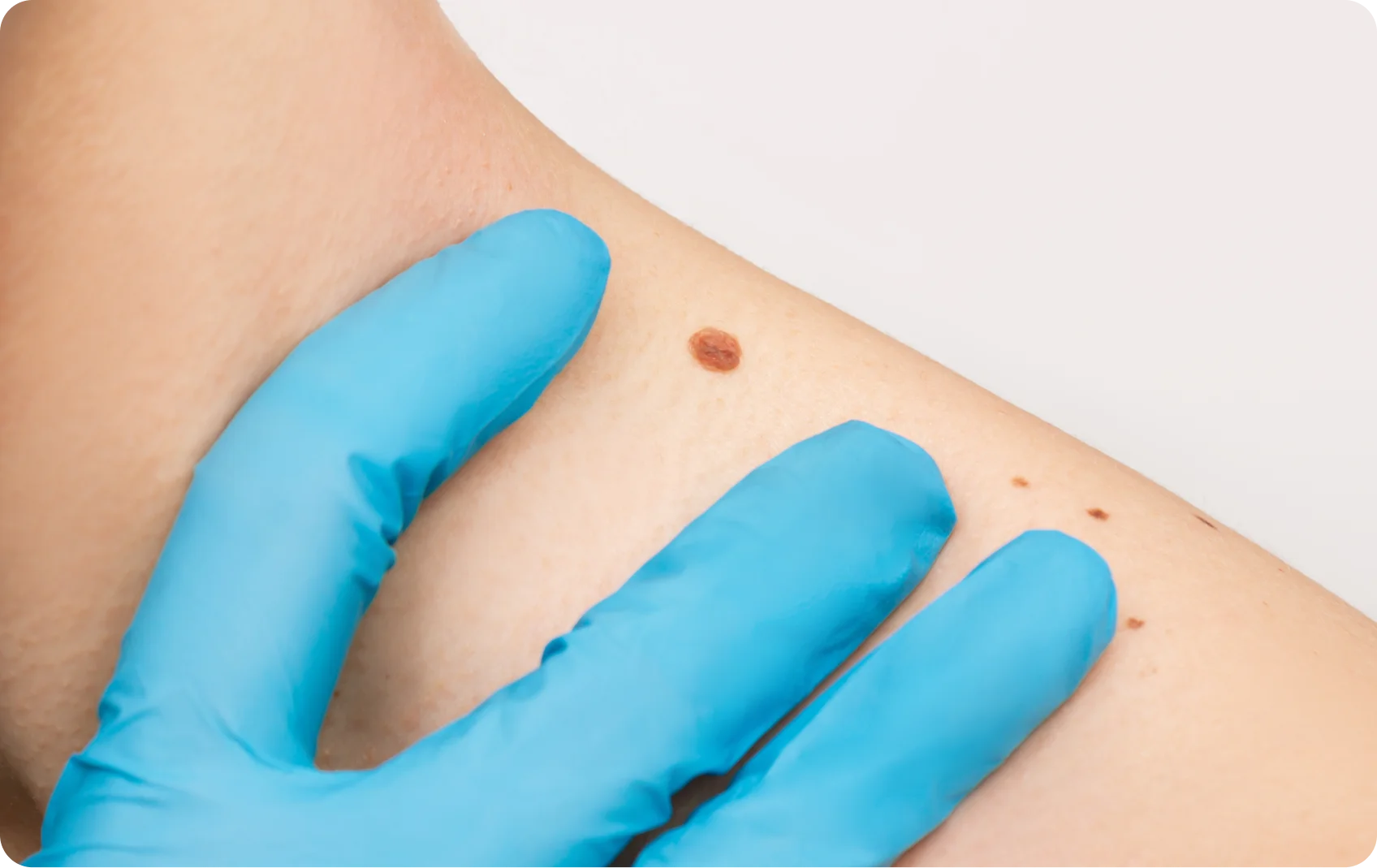
Mole Examination and Admission
Mole Examination: A mole examination involves the careful assessment of moles and other skin spots by a healthcare professional, usually a dermatologist. During this examination, the doctor evaluates the number, size, color, and shape of moles on the skin’s surface. They also monitor any changes in the moles, such as growth, color variation, bleeding, or itching, to detect potential issues early. Dermatologists conduct mole examinations to assess the risk of skin cancer. If a mole appears suspicious or there is a high risk of skin cancer, the dermatologist may recommend a series of tests or procedures to examine the mole in more detail or to remove it.
Mole Removal: Mole removal, performed by a dermatologist or surgeon, is the procedure of removing a mole from the skin’s surface. Moles may be removed for aesthetic reasons or due to potential health risks. Various methods may be employed depending on the mole’s type and location.
- These methods may include:
Excision or Surgical Removal: The mole is removed by cutting it out under local anesthesia, sometimes followed by stitches. - Electrocautery or Cauterization: The mole is burned off the skin using electric current.
- Cryotherapy: The mole is frozen off using liquid nitrogen.
Laser Treatments: Some moles can be removed with laser treatments, usually applied to smaller moles.
Scar Care: A scar may form after mole removal. To minimize scarring, it’s important to follow proper skin care practices.
Mole removal is generally a quick and simple procedure. However, if the results indicate that the mole signals a serious issue, such as skin cancer, further treatment may be required. Therefore, consulting a dermatologist to assess whether a mole should be removed or examined is essential.
Contact Us
Contact
- +90 (549) 170 10 92
- [email protected]
- Caddebostan, Selin Sk. No:4/2 34728 Kadıköy/Istanbul

